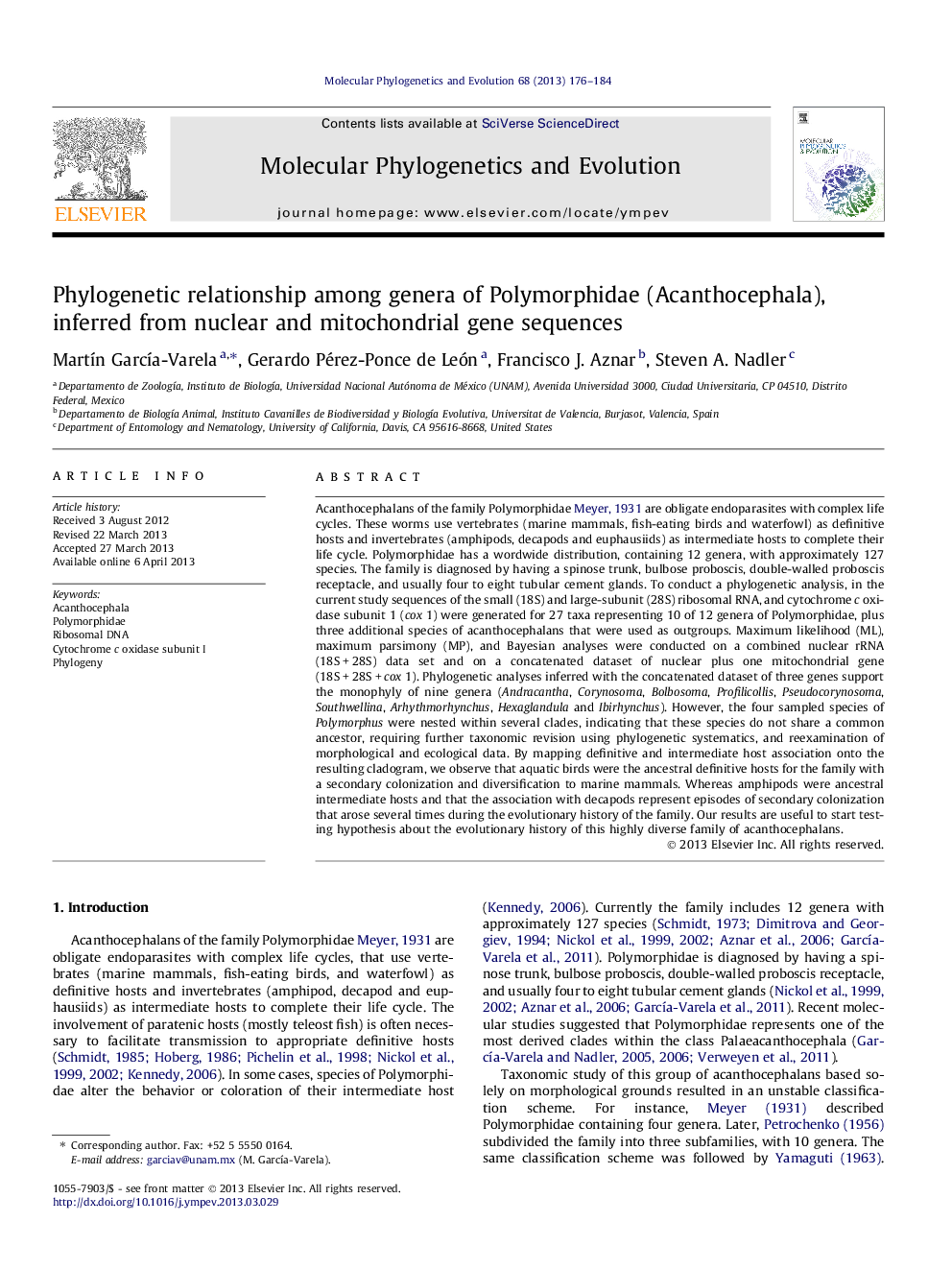| کد مقاله | کد نشریه | سال انتشار | مقاله انگلیسی | نسخه تمام متن |
|---|---|---|---|---|
| 2833988 | 1164281 | 2013 | 9 صفحه PDF | دانلود رایگان |

• We inferred the phylogeny of Polymorphidae using three molecular markers.
• All the Phylogenetic analyses support the monophyly of nine genera.
• Species of Polymorphus were nested in three clades indicating that the genus is polyphyletic.
• Aquatic birds and amphipods were the ancestral definitive and intermediate hosts respectively for the family.
Acanthocephalans of the family Polymorphidae Meyer, 1931 are obligate endoparasites with complex life cycles. These worms use vertebrates (marine mammals, fish-eating birds and waterfowl) as definitive hosts and invertebrates (amphipods, decapods and euphausiids) as intermediate hosts to complete their life cycle. Polymorphidae has a wordwide distribution, containing 12 genera, with approximately 127 species. The family is diagnosed by having a spinose trunk, bulbose proboscis, double-walled proboscis receptacle, and usually four to eight tubular cement glands. To conduct a phylogenetic analysis, in the current study sequences of the small (18S) and large-subunit (28S) ribosomal RNA, and cytochrome c oxidase subunit 1 (cox 1) were generated for 27 taxa representing 10 of 12 genera of Polymorphidae, plus three additional species of acanthocephalans that were used as outgroups. Maximum likelihood (ML), maximum parsimony (MP), and Bayesian analyses were conducted on a combined nuclear rRNA (18S + 28S) data set and on a concatenated dataset of nuclear plus one mitochondrial gene (18S + 28S + cox 1). Phylogenetic analyses inferred with the concatenated dataset of three genes support the monophyly of nine genera (Andracantha, Corynosoma, Bolbosoma, Profilicollis, Pseudocorynosoma, Southwellina, Arhythmorhynchus, Hexaglandula and Ibirhynchus). However, the four sampled species of Polymorphus were nested within several clades, indicating that these species do not share a common ancestor, requiring further taxonomic revision using phylogenetic systematics, and reexamination of morphological and ecological data. By mapping definitive and intermediate host association onto the resulting cladogram, we observe that aquatic birds were the ancestral definitive hosts for the family with a secondary colonization and diversification to marine mammals. Whereas amphipods were ancestral intermediate hosts and that the association with decapods represent episodes of secondary colonization that arose several times during the evolutionary history of the family. Our results are useful to start testing hypothesis about the evolutionary history of this highly diverse family of acanthocephalans.
Figure optionsDownload as PowerPoint slide
Journal: Molecular Phylogenetics and Evolution - Volume 68, Issue 2, August 2013, Pages 176–184